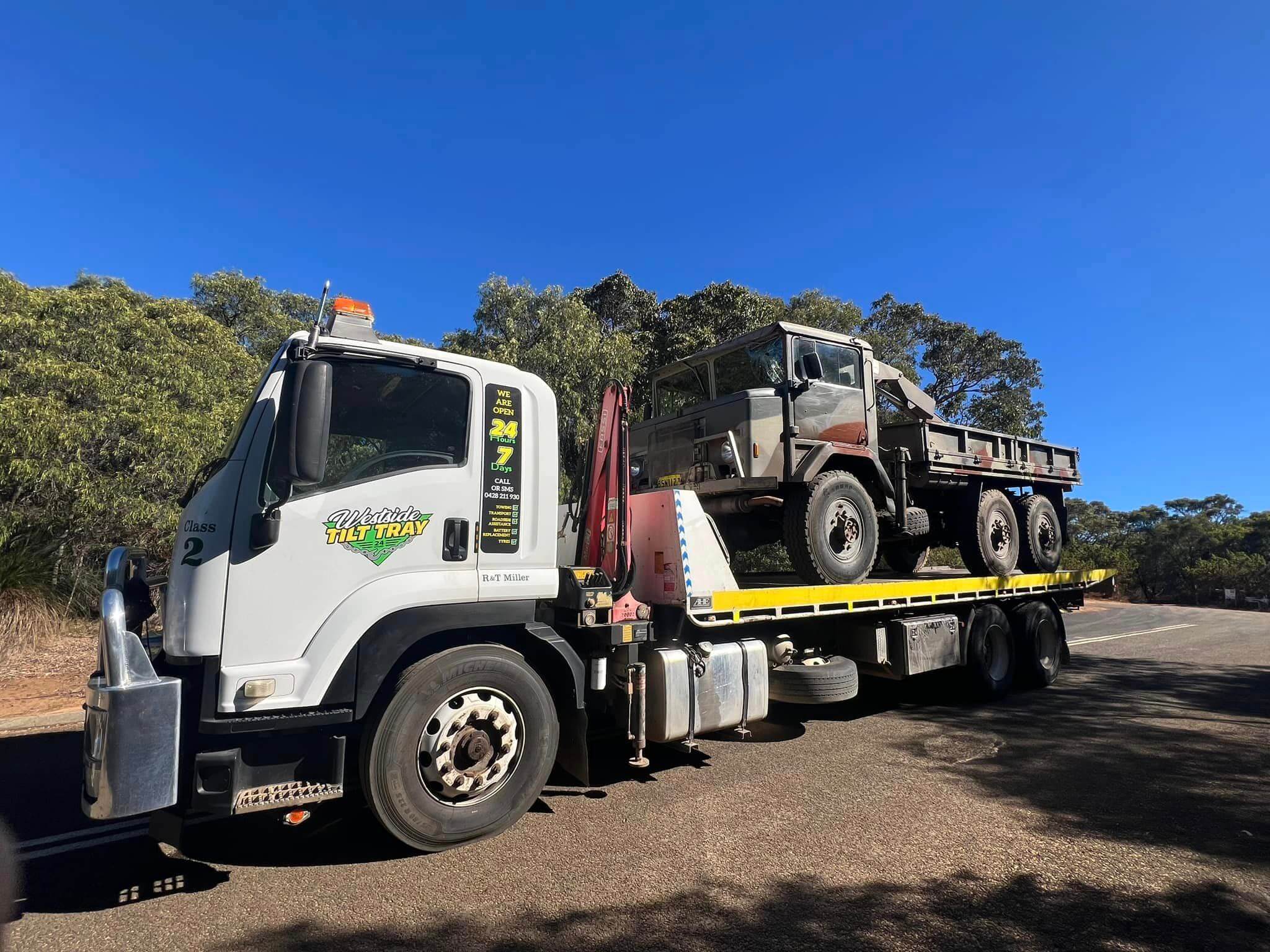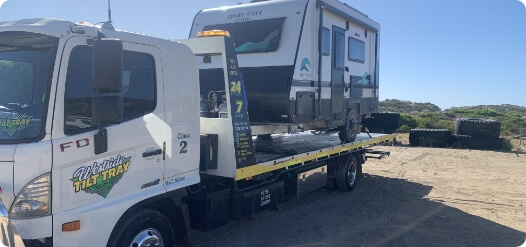Tilt Trays for Heavy Machinery Transport

Heavy machinery transport is one of the most relied-on services in the heavy haulage industry. This is the process of transporting large vehicles and equipment from one place to another. It also relies on another process called tilt tray transport.
To understand more about tilt trays and heavy machinery haulage, check this out.
The Challenges of Heavy Machinery Transport
The transportation of heavy equipment involves moving oversized and weighty machinery from one location to another. This presents a unique set of challenges that demand careful planning, specialised equipment, and experienced personnel. Get to know the most common challenges faced in this industry.
Regulatory Compliance and Permits
One of the foremost challenges in heavy machinery haulage is navigating the complex web of regulations and obtaining the necessary permits. Different regions, countries, and states have varying rules regarding the transportation of oversized loads.
Failure to comply with these regulations can result in fines, delays, and legal consequences. Securing permits, understanding weight restrictions, and coordinating with regulatory bodies are crucial to ensure a smooth transport process.
Route Planning and Infrastructure Constraints
Identifying the most suitable route for transporting heavy machinery is a meticulous task. The size and weight of the equipment often limit the available roads and bridges, necessitating careful route planning to avoid low clearances, weight restrictions, and other infrastructure constraints. Additionally, road conditions, traffic, and potential detours must be considered to minimise the risk of damage to both the machinery and the transportation equipment.
Specialised Equipment and Handling
Heavy machinery transport requires specialised transportation equipment, such as flatbed trucks, low loaders, or multi-axle trailers, to ensure safe and secure transport. Choosing the right type of equipment is critical, considering the dimensions and weight of the machinery.
Loading and unloading heavy equipment demand specialised handling techniques, including cranes, forklifts, or rigging systems. Improper equipment selection or handling can lead to accidents, damage, and project delays.
Safety Concerns and Risk Management
Safety is paramount in heavy transport due to the inherent risks of moving oversized loads. Accidents during transportation can have severe consequences, posing threats to personnel, other road users, and the machinery itself. Implementing stringent safety protocols, training operators, and conducting thorough risk assessments are essential to mitigate potential hazards and ensure a safe transport process.
Communication and Coordination
Effective communication and coordination among all stakeholders involved in the transportation process are vital. This includes collaboration between transportation companies, regulatory authorities, project managers, and on-site personnel.
Miscommunication or lack of coordination can result in delays, cost overruns, and increased safety risks. Establishing clear lines of communication and maintaining regular updates throughout the machinery transport process is essential for successful transportation.
Dealing with Challenges with the Help of Tilt Tray Transport
Heavy machinery transport presents a myriad of challenges that demand specialised solutions. One such innovative approach is tilt tray transport, which addresses the challenges presented above. To understand how tilt tray services are a versatile and efficient solution for overcoming these hurdles, check this out.
Regulatory Compliance and Permits
Oversized loads often require special permissions and adherence to specific regulations to ensure public safety and infrastructure preservation. Tilt tray tow truck services streamline this process by offering a versatile solution that minimises the need for dismantling or disassembly.
Tilt trays are designed to accommodate various load sizes and shapes, eliminating the necessity for extensive permits associated with wide or tall loads. This adaptability ensures that tilt tray transport complies with regulatory requirements, reducing machinery transportation’s bureaucratic challenges.
Route Planning and Infrastructure Constraints
Navigating through urban landscapes and intricate routes poses a significant challenge in machinery transport. Traditional methods may encounter difficulties with low bridges, narrow roads, or sharp turns.
Tilt tray transport, however, provides a more flexible approach. The ability to tilt the tray allows for a lower centre of gravity during transportation, making it possible to navigate through areas with height restrictions.
Additionally, the manoeuvrability of tilt trays enables them to negotiate tight turns and navigate challenging terrains. This flexibility in route planning mitigates infrastructure constraints, making tilt tray transport a preferred choice for transporting heavy machinery through diverse and constrained environments.
Specialised Equipment and Handling
Heavy machinery transport often requires specialised equipment and handling due to its size, weight, and delicate components. Tilt tray transport excels in this aspect by providing a platform that can be customised to match the unique dimensions of the machinery being transported. The tilting mechanism allows for efficient loading and unloading without additional cranes or specialised equipment.
Furthermore, the adaptability of tilt trays ensures that even irregularly shaped machinery can be securely transported without the risk of damage. The controlled descent and ascent of the tray provide a smooth and secure transportation process, reducing the potential for accidents or mishandling during loading and unloading.
Safety Concerns and Risk Management
Safety is paramount in heavy haulage transport, where accidents can lead to severe consequences. Tilt tray transport incorporates safety features to mitigate risks associated with lifting, securing, and transporting heavy loads. The controlled tilting mechanism ensures a gradual and secure transition during loading and unloading, minimising the risk of sudden movements that could endanger personnel or equipment.
In addition to the mechanical safety features, operators of tilt tray transport are often well-trained and experienced in handling heavy machinery. This expertise contributes to effective risk management throughout the transportation process. The reduced reliance on external lifting equipment also decreases the potential points of failure, further enhancing the overall safety of machinery transport.
Communication and Coordination
Effective communication and coordination are essential elements in successful heavy machinery delivery. Tilt tray transport streamlines this aspect by providing a more efficient and controlled loading and unloading process.
Advanced technology, such as radio communication and GPS tracking systems, facilitates realtime communication. This enables operators to stay informed about road conditions, potential obstacles, and any changes in the transportation plan. Coordinating between the tilt tray operator, escort vehicles, and ground personnel is crucial for a smooth and safe transportation process, and tilt tray transport fosters this collaboration.
Reliable Tilt Tray Transport Service
Tilt tray transport effectively solves the multifaceted challenges associated with heavy machinery transport. And if you are looking for a reliable tilt tray service, the one to trust is Westside Tilt Tray.
To understand more about our tilt tray service, give us a call!
TESTIMONIALS
Our Clients Love Us
